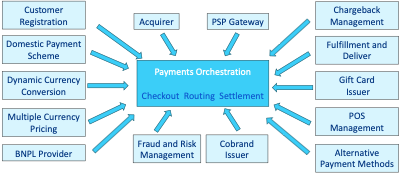This article is not intended to be a history lesson in payments, but it is important to revisit a few innovations to bring the topic of payments orchestration along. Before the history lesson, we need to define payments orchestration. Generally, this is a process that can be developed either internally or with a partner to allow for the use of multiple payment processors, technologies, or acquirers to optimize the payments process and customer experience.
There are some key milestones in payments that set the foundation for orchestration, such as moving from stand-alone payments terminals to integrated payments terminals. That was followed closely by the advent of online payments and then the introduction of omni-channel commerce. Many of these innovations have led us to a much more complex and difficult payments processing environment which has led to the development of a payments orchestration layer.
One of the key foundations of payments orchestration is the customer experience. Before all this technology, the customer would walk into a store, find some merchandise, and then pay for the items and leave the store. Now you have customers that may start their journey in-store, but then go home and look at the website and order online. In addition, the customer can choose to have the merchandise delivered, pick it up in store, or even a mixture of both. These complexities have driven the merchant community to look for a solution to help simplify and enhance these experiences, which has led to the development of the orchestration layer.
Think of payments orchestration as the traffic cop for transactions when you have multiple decisions to be made. The diagram below provides an example of how all the systems used would integrate into the orchestration layer. No one system or setup is exactly the same and that is the beauty of the orchestration layer. You can add, subtract, change, or modify any one part and the layer will handle the changes in coordination with the other systems. No more waterfall updates!

The lessons learned from the review of payments orchestration is that there is no perfect solution for everyone, each merchant needs to evaluate their stack and solutions. Take time to get your teams together, review your systems’ flow, and see if there is a benefit to all for the addition of the complexity. I encourage each of you to review the MAG educational content from our eLearning course, “Exploring Payments Technology”. While the course does not teach you how to evaluate a payments orchestration layer, it does talk about the things that should be considered in a payments technology implementation.

/bryan-194x2212d15a7a6-5b0d-46ca-8c9e-94ea096185f2.png?sfvrsn=20a2994b_5)